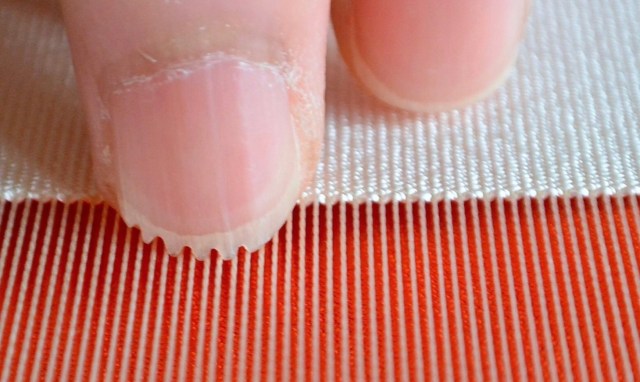
These artisans carve out an essential tool at the end of their fingertips.
Whether they’re shaving wood like cheese or painting intricate freehand patterns with ease, there’s something inherently fascinating about watching experienced craftspeople at work.
This week it’s time to turn our attention to yet another captivating traditional craft, and this one comes to us from Shiga Prefecture, where the artisans involved all have one common physical feature: little jagged edges carved into their fingernails.
The craft these artisans are involved in is called tsumekaki hon tsuzure ori, which literally translates to “nail-scratching genuine-tapestry weave“. As the name suggests, this technique involves the use of nails in order to create the weave, and it’s the oldest type of Nishijin Ori, a traditional textile produced in the Nishijin district of Kyoto.
Made in Japan for over 1,000 years, one company in Shiga Prefecture is working hard to promote the ancient craft and keep it relevant for today by using it to create products suited to modern lifestyles. Called Kiyohara Orimono, the company has also produced this video to give us a behind-the-scenes look at the weaving process, and the reason why those jagged little nails come in handy.
The video above shows how the filed nail is used as a tool for weaving, scratching the threads together with its serrated edge, as it’s been done for centuries.
The result of this painstaking process is a fabric with elaborate patterns that look as if they’ve been painted on with a brush.
Surprisingly, not a lot of people in Japan were aware that this technique existed, and when Kiyohara’s Senior Managing Director Seiji Kiyohara brought it to everyone’s attention with this tweet on Twitter, it quickly went viral.
https://twitter.com/Sksk72957267/status/1295567078947041280And to answer everyone’s question about how the nails are filed into such precise little triangular tips, this is how it’s done.
https://twitter.com/Sksk72957267/status/1295717816696479746Kiyohara, who says his goal is to ensure that traditional Japanese weaving techniques never die, is now using age-old fabric-making methods to make stylish products for everyday use under the Sufuto brand.
Though you can’t really put a price on centuries of tradition, Sufuto’s prices start at 3,080 yen (US$29.11) for wind chimes featuring hand-woven fabric, which can be purchased online here.
It’s nice to see ancient traditions throughout Japan being adapted for today in all sorts of interesting ways, bringing us unique products like lattice wood bicycles and 100-year cosmetics brushes. Here’s hoping these traditions survive well into the future, because carrying our watermelons just wouldn’t be the same without them.
Source, images: YouTube/株式会社清原織物
● Want to hear about SoraNews24’s latest articles as soon as they’re published? Follow us on Facebook and Twitter!

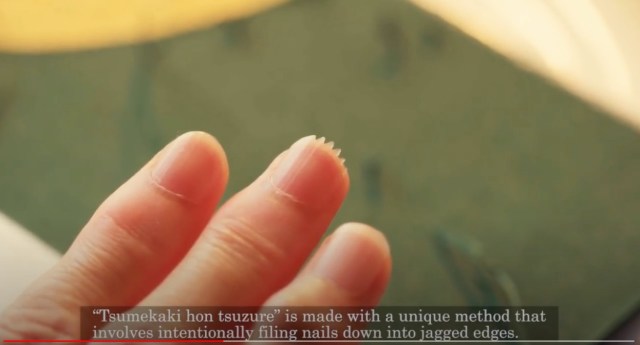
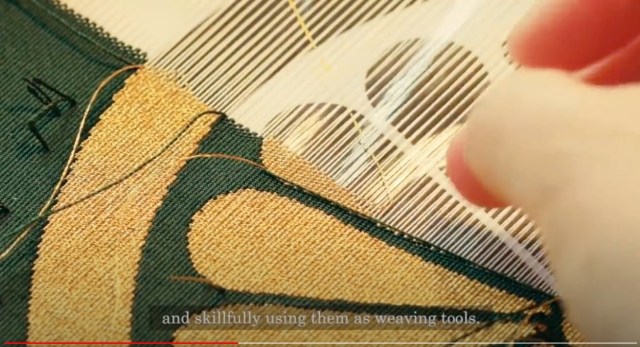
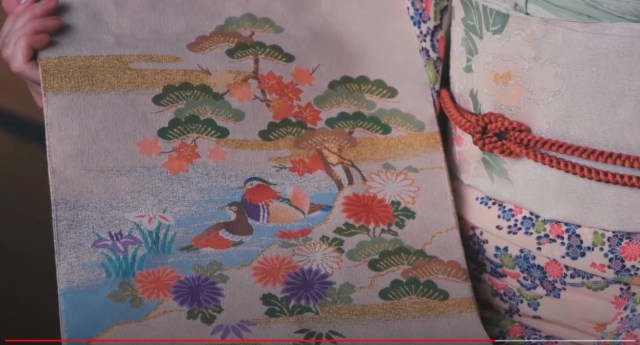
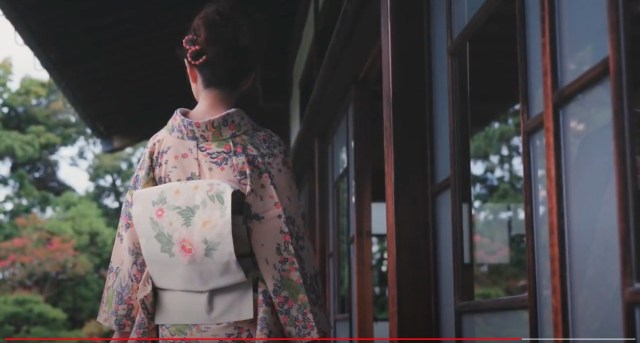
 “Hyakunen Brush” promises your face a luxurious, tea ceremony-like frothy wash
“Hyakunen Brush” promises your face a luxurious, tea ceremony-like frothy wash Chinese artisans use traditional foot-powered lathe to craft beautiful wooden bowls【Video】
Chinese artisans use traditional foot-powered lathe to craft beautiful wooden bowls【Video】 Let beautiful Japanese patterns bloom in your shoes with these insoles from REGALERIA!
Let beautiful Japanese patterns bloom in your shoes with these insoles from REGALERIA! Japanese rokushigake temple architecture for your living room: The no-nail Masugumi table
Japanese rokushigake temple architecture for your living room: The no-nail Masugumi table Yosegi wood craft — amazing in its beautiful simplicity and precision!
Yosegi wood craft — amazing in its beautiful simplicity and precision! Japan’s new difficult-to-drink-from beer glass protects your liver, but it’s a brutal experience
Japan’s new difficult-to-drink-from beer glass protects your liver, but it’s a brutal experience How to order snacks on a Shinkansen bullet train in Japan
How to order snacks on a Shinkansen bullet train in Japan New samurai glasses are Japan’s latest weird must-have souvenir
New samurai glasses are Japan’s latest weird must-have souvenir New Pokémon ice cream, dessert drinks, and cool merch coming to Baskin-Robbins Japan【Pics】
New Pokémon ice cream, dessert drinks, and cool merch coming to Baskin-Robbins Japan【Pics】 Doraemon found buried at sea as scene from 1993 anime becomes real life【Photos】
Doraemon found buried at sea as scene from 1993 anime becomes real life【Photos】 Burger King Japan suddenly adds Dr. Pepper and Dr. Pepper floats to its menu nationwide
Burger King Japan suddenly adds Dr. Pepper and Dr. Pepper floats to its menu nationwide Starbucks Japan welcomes alpacas for cute summer drinkware line【Photos】
Starbucks Japan welcomes alpacas for cute summer drinkware line【Photos】 High-fashion Totoro cuddle purse is like an elegant stroll in the forest【Photos】
High-fashion Totoro cuddle purse is like an elegant stroll in the forest【Photos】 Studio Ghibli hair accessories keep your style tidy with help from Kiki, Moro, Calcifer, and more
Studio Ghibli hair accessories keep your style tidy with help from Kiki, Moro, Calcifer, and more What if Sailor Moon characters were lingerie models? They’d look stunning like this 【Photos】
What if Sailor Moon characters were lingerie models? They’d look stunning like this 【Photos】 Nintendo history you can feel – Super NES, N64, and GameCube controllers become capsule toys
Nintendo history you can feel – Super NES, N64, and GameCube controllers become capsule toys Hello, cosmetics! Clinique teams up with Hello Kitty this summer for first-time collaboration
Hello, cosmetics! Clinique teams up with Hello Kitty this summer for first-time collaboration Demon Slayer: Kimetsu no Yaiba gets new roller coaster attractions and food at Universal Studios Japan
Demon Slayer: Kimetsu no Yaiba gets new roller coaster attractions and food at Universal Studios Japan “The most Delicious Cup Noodle in history” – Japan’s French Cup Noodle wins our heart【Taste test】
“The most Delicious Cup Noodle in history” – Japan’s French Cup Noodle wins our heart【Taste test】 Starbucks releases a cute Frappuccino and Unicorn Cake…but not in Japan
Starbucks releases a cute Frappuccino and Unicorn Cake…but not in Japan Kyoto Tower mascot termination reveals dark side behind cute Japanese characters
Kyoto Tower mascot termination reveals dark side behind cute Japanese characters McDonald’s Japan’s Soft Twist Tower: A phantom ice cream only sold at select branches
McDonald’s Japan’s Soft Twist Tower: A phantom ice cream only sold at select branches Yabai Ramen: What makes this Japanese ramen so dangerous?
Yabai Ramen: What makes this Japanese ramen so dangerous? Finally! Nintendo Japan expands Switch 8-bit controller sales to everybody, Online member or not
Finally! Nintendo Japan expands Switch 8-bit controller sales to everybody, Online member or not Japanese government wants to build luxury resorts in all national parks for foreign tourists
Japanese government wants to build luxury resorts in all national parks for foreign tourists To combat declining birth rate, Japan to begin offering “Breeding Visas” to foreigners
To combat declining birth rate, Japan to begin offering “Breeding Visas” to foreigners 10 things you should buy at 7-Eleven in Japan
10 things you should buy at 7-Eleven in Japan Studio Ghibli releases anime heroine cosplay dresses that are super comfy to wear
Studio Ghibli releases anime heroine cosplay dresses that are super comfy to wear Woman charged for driving suitcase without a license in Osaka
Woman charged for driving suitcase without a license in Osaka Studio Ghibli unveils My Neighbour Totoro miniature house model
Studio Ghibli unveils My Neighbour Totoro miniature house model Kyoto experiencing problems with foreign tourists not paying for bus fares, but not on purpose
Kyoto experiencing problems with foreign tourists not paying for bus fares, but not on purpose Fighting mild hunger with a Japanese soda that turns into jelly in the stomach【Taste test】
Fighting mild hunger with a Japanese soda that turns into jelly in the stomach【Taste test】 Studio Ghibli’s Howl’s Moving Castle tapestry unveiled in Japan for first time
Studio Ghibli’s Howl’s Moving Castle tapestry unveiled in Japan for first time McDonald’s new Happy Meals offer up cute and practical Sanrio lifestyle goods
McDonald’s new Happy Meals offer up cute and practical Sanrio lifestyle goods Sales of Japan’s most convenient train ticket/shopping payment cards suspended indefinitely
Sales of Japan’s most convenient train ticket/shopping payment cards suspended indefinitely Sold-out Studio Ghibli desktop humidifiers are back so Totoro can help you through the dry season
Sold-out Studio Ghibli desktop humidifiers are back so Totoro can help you through the dry season Japanese government to make first change to romanization spelling rules since the 1950s
Japanese government to make first change to romanization spelling rules since the 1950s Foreigner’s request for help in Tokyo makes us sad for the state of society
Foreigner’s request for help in Tokyo makes us sad for the state of society Ghibli founders Toshio Suzuki and Hayao Miyazaki contribute to Japanese whisky Totoro label design
Ghibli founders Toshio Suzuki and Hayao Miyazaki contribute to Japanese whisky Totoro label design Tokyo’s most famous Starbucks is closed
Tokyo’s most famous Starbucks is closed Princesses, fruits, and blacksmiths: Study reveals the 30 most unusual family names in Japan
Princesses, fruits, and blacksmiths: Study reveals the 30 most unusual family names in Japan Enjoy the cherry blossoms under a sakura umbrella
Enjoy the cherry blossoms under a sakura umbrella Are 100-yen shop Daiso’s gel nail polish strips a good dupe for salon quality nails? Let’s find out
Are 100-yen shop Daiso’s gel nail polish strips a good dupe for salon quality nails? Let’s find out Japanese carpenters demonstrate traditional wooden joints and it’s oddly satisfying 【Video】
Japanese carpenters demonstrate traditional wooden joints and it’s oddly satisfying 【Video】 Nails looking duller than a sack of potatoes? Brighten them up with Smart Nails!
Nails looking duller than a sack of potatoes? Brighten them up with Smart Nails! Brooklyn Beckham orders candy from small artisan sweet company in Japan…with a twist
Brooklyn Beckham orders candy from small artisan sweet company in Japan…with a twist Traditional Japanese ceramics given new life in AR, delivered straight to your web browser for free
Traditional Japanese ceramics given new life in AR, delivered straight to your web browser for free Whisky worship: Kyoto craftsmen make prayer beads out of Japanese whisky barrels
Whisky worship: Kyoto craftsmen make prayer beads out of Japanese whisky barrels “Business Nail” – the latest trend among young Japanese businessmen looking to get ahead
“Business Nail” – the latest trend among young Japanese businessmen looking to get ahead Twitter user in Japan makes amazing, tiny nail art with nail clippers and a utility knife【Pics】
Twitter user in Japan makes amazing, tiny nail art with nail clippers and a utility knife【Pics】 Exhibition on the 1,500 year-history of traditional Japanese women’s clothing to open in Shibuya
Exhibition on the 1,500 year-history of traditional Japanese women’s clothing to open in Shibuya Cheap cosplay: How to make an awesome magic sword slash for just three bucks【Photos】
Cheap cosplay: How to make an awesome magic sword slash for just three bucks【Photos】 San’in, Japan is breathtakingly beautiful especially when captured with a 4K video camera【Video】
San’in, Japan is breathtakingly beautiful especially when captured with a 4K video camera【Video】 New crowdfunding project from Japan mixes COVID-19 comedy with a touch of Kyoto craftsmanship
New crowdfunding project from Japan mixes COVID-19 comedy with a touch of Kyoto craftsmanship Studio Ghibli’s Howl’s Moving Castle tapestry unveiled in Japan for first time
Studio Ghibli’s Howl’s Moving Castle tapestry unveiled in Japan for first time Talented illustrator gives cast of Dragon Ball characters amazing samurai warlord makeovers
Talented illustrator gives cast of Dragon Ball characters amazing samurai warlord makeovers Disney meets classic Japan — see your favorite characters reborn as traditional Japanese crafts!
Disney meets classic Japan — see your favorite characters reborn as traditional Japanese crafts!
Leave a Reply